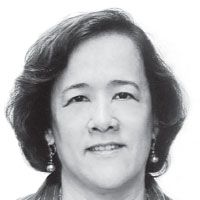Whatever happened to ‘More Fun in the Philippines’

Why is the Philippines lagging behind in foreign tourist arrivals within the ASEAN (Association of South East Asian Nations) region? Among ten-member states, our country has notably not been getting much tourist traffic.
Latest statistics of intra-ASEAN travel market showed the Philippines placed sixth in terms of tourist arrivals. It is a sad comparison when taken in context of visa-free travel among ASEAN neighbors.
In the five years since the administration of President Benigno “Noy” Aquino III launched the “More Fun in the Philippines” campaign, our country unfortunately still has not developed a brand for it. It remains a generic campaign that obviously failed to live up to its projected robust growth of tourism receipts.
Marketing is most critical in attaining the 10 million tourist arrivals that the Aquino administration targets by the end of its term in June 2016. With 4.2 million tourist arrivals in 2014, it did not even reach the five or six million tourist arrival target of the Department of Tourism (DOT) with less than a year left in P-Noy’s term.
This, despite the passage into law of Republic Act 9593, or the Tourism Act of the Philippines in 2009, that set forth the policies designed to ensure the country’s capacity to accommodate the desired increase in tourist arrivals. It provided for, among other things, incentives to lure foreign investors in infrastructure like roads, airports, hotels, resorts, theme parks, convention and exhibition centers and tourist transport services.
RA 9593 mandated promotional funding from specific sources to give competitive edge for the Philippines at least within the ASEAN region. If the spirit and intent of the law is followed, the Tourism Act mandated P5 billion be sourced from Philippine Amusement and Gaming Corp. (PAGCOR), or about 25% of its annual net revenue. RA 9593 also mandated at least 25% of the revenue from international airports and seaports, Duty Free Philippines, and 0.5% from the national government.
At most, however, only 20% is reportedly being released by the Department of Budget and Management (DBM) to the Tourism Promotions Board (TPB) that, in turn, allocates funding to specific markets.
Industry players decry the low priority in budget allocations of major traditional tourist markets of the Philippines like North America, Europe, Japan and Middle East and Australia. TPB reportedly gives allocations to low yield markets like Korea and mainland China.
There is something definitely wrong with the marketing direction as well as promotional thrusts of DOT/TPB. The DOT and TPB have no delineation in their promotional functions. They are, in fact, duplicating their marketing and promotional functions, resulting in a waste of scarce government resources.
Private sector tourism stakeholders are now taking the initiative to lead with active participation in the ASEANTA, the regional tourism body composed of private associations in ASEAN member countries.
By the end of this year, the regional bloc will officially launch the ASEAN single market. This is just a ceremonial activity because all this time we already are living in the ASEAN Economic Community of seamless, borderless traffic of people and goods into each other’s countries.
Despite traffic condition and peace and order issues, Manila remains a major gateway and a turnaround of most foreign airlines with their respective countries as a hub. The low figure is due to limited flights from major markets particularly North America and Europe.
This is attributed to slow infrastructure development with airports and seaports as major components in the overall tourism development. The construction of seaports is needed to tap the vast potential of cruise industry in the Asia Pacific.
The passenger terminals 1, 2 and 3 of the Ninoy Aquino International Airport (NAIA) can only handle 35 million as against Bangkok, Singapore, Malaysia and Vietnam which built new airports. The domestic terminal being used by low cost/budget carriers contribute substantial growth in air passenger traffic and even runway congestion. Both our international and domestic airports are using only one runway, which limits the capacity of aircraft to land.
The Tourism Infrastructure and Enterprise Zone Authority (TIEZA) is mandated by RA 9593 to implement such infrastructure development and administer the grant of incentives to promote tourism enterprises. But another government agency, the Board of Investment, had another priority. The BOI took away the income tax holiday set forth in RA 9563, and even suspended the grant of incentives in Metro Manila, Cebu City, Mactan Island and Boracay Island.
This is just an example of how confused our tourism policymakers are.
Take the case of Intramuros, one of the more familiar and famous tourist destinations in Manila. While it is located in Manila, it is not under the jurisdiction of the city government, but under the Intramuros Administration (IA), one of the attached agencies of the DOT.
The IA deploys its own tourist security men who are dressed like Katipuneros of the past to keep with the historic surroundings of the so-called walled city. They are also in charge of traffic enforcement and have their own parking rules. This I found out when I went there last week to Starbucks in front of the Bureau of Immigration at A. Soriano St.
While trying to look for a parking space for our vehicle, several men acting as watch-your-car guys called our attention to the area looped with plastic cord in front of Starbucks. Even before we could alight from our vehicle, one of them handed me an “official receipt” after writing on it “fifty pesos only (P50).”
We stayed there less than an hour, but the parking fee was more than what we pay in private parking spaces in Makati. What perplexed me when I read the official receipt was that it was issued by a certain company called Kalang Maju Philippines Corp. with address in Muralla St., complete with its numbers of “VAT Reg.TIN.” Where does the IA or DOT fit into this lucrative parking business?
It’s really “More Fun in the Philippines,” warts and all.
- Latest
- Trending





























